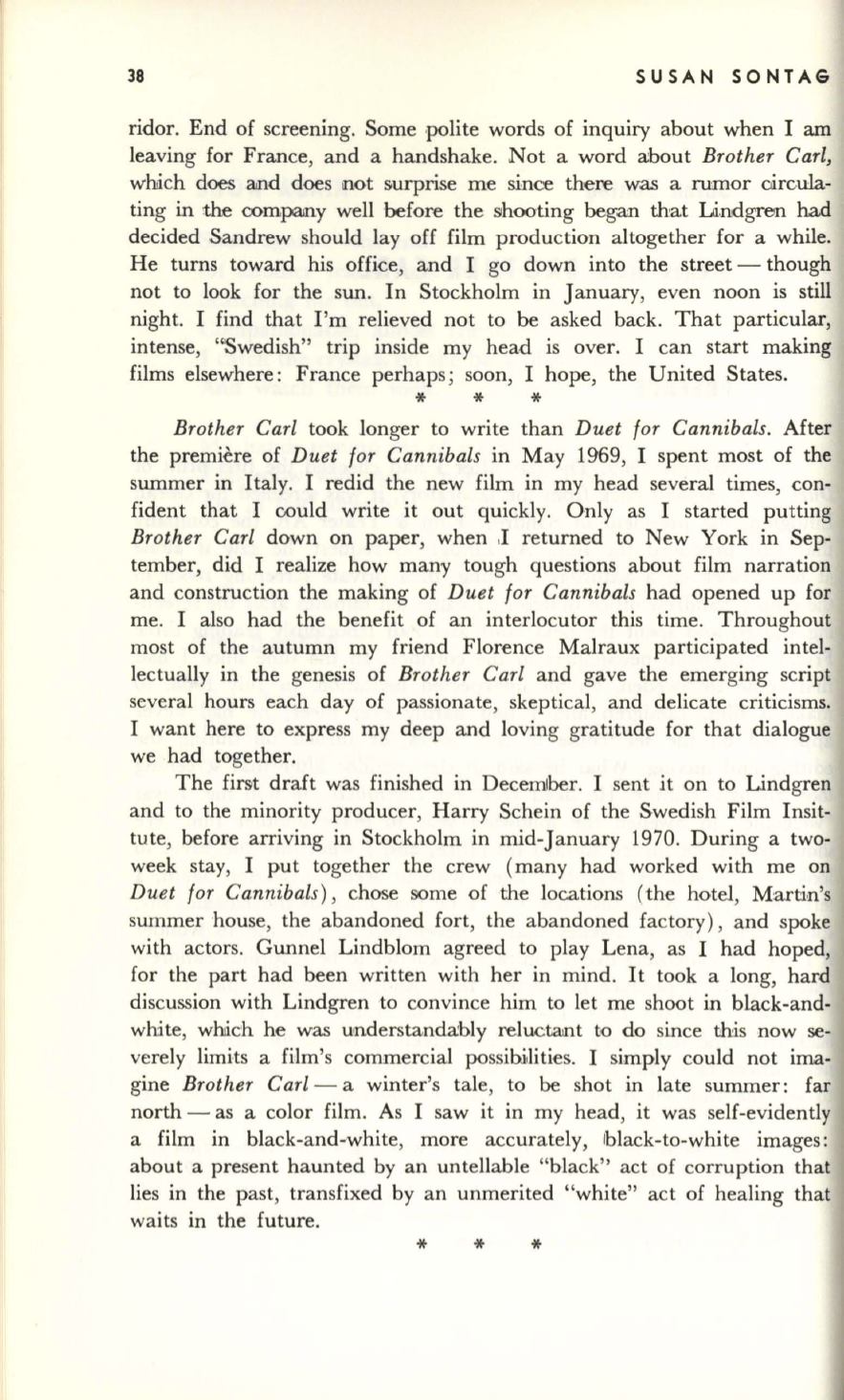
38
SUSAN SONTAG
ridor. End of screening. Some polite words of inquiry about when I am
leaving for France, and a handshake. Not a word a:bout
Brother Carl,
which does and does not surprise me since there was a rumor circula–
ting in
:the
company well before the shooting
began
that Lindgren
had
decided Sandrew should layoff film production altogether for a while.
He turns toward his office, and I go down into the street - though
not to look for the sun. In Stockholm in January, even noon is still
night. I find that I'm relieved not to be asked back. That particular,
intense, "Swedish" trip inside my head is over. I can start making
films elsewhere: France perhaps; soon, I hope, the United States.
* * *
Brother Carl
took longer to write than
Duet for Cannibals.
After
the premiere of
Duet for Cannibals
in May 1969, I spent most of the
summer in Italy. I redid the new film in my head several times, con–
fident that I could write it out quickly. Only as I started putting
Brother Carl
down on paper, when ,I returned to New York in Sep–
tember, did I realize how many tough questions about film narration
and construction the making of
Duet for Cannibals
had opened up for
me. I also had the benefit of an interlocutor this time. Throughout
most of the autumn my friend Florence Malraux participated intel–
lectually in the genesis of
Brother Carl
and gave the emerging script
several hours each day of passionate, skeptical, and delicate criticisms.
I want here to express my deep and loving gratitude for that dialogue
we had together.
The first draft was finished in Decemlber. I sent
it
on to Lindgren
and to the minority producer, Harry Schein of the Swedish Film Insit–
tute, before arriving in Stockholm in mid-January 1970. During a two–
week stay, I put together the crew (many had worked with me on
Duet for Cannibals),
chose some of the locations (the hotel, Marrin's
summer house, the abandoned fort, the abandoned factory), and spoke
with actors. Gunnel Lindblom agreed to play Lena, as I had hoped,
for the part had been written with her in mind. It took a long, hard
discussion with Lindgren to convince him to let me shoot in black-and–
white, which he was understandably reluctant to do since this now se–
verely limits a film's commercial
possib~lities.
I simply could not ima–
gine
Brother Carl-
a winter's tale, to be shot in late summer: far
north - as a color film. As I saw it in my head, it was self-evidently
a film in black-and-white, more accurately, Iblack-to-white images:
about a present haunted by an untellable "black" act of corruption that
lies in the past, transfixed by an unmerited "white" act of healing that
waits in the future.
*
* *


